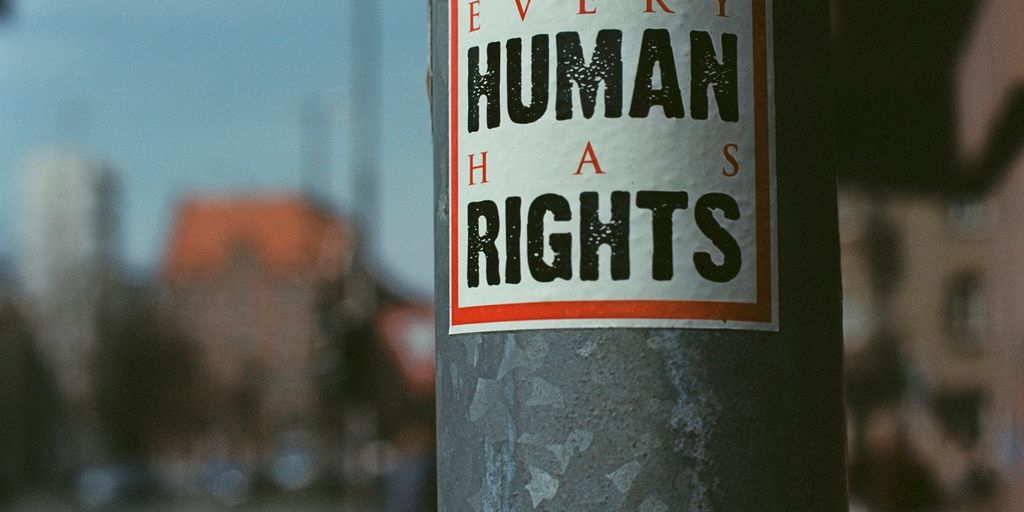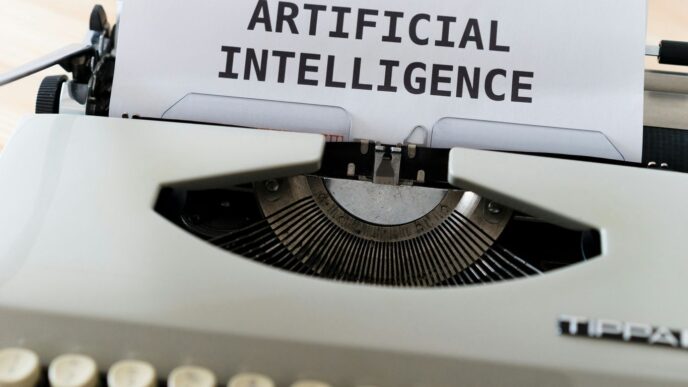So, AI is everywhere now, right? It’s in our phones, our cars, even how we get loans. With all this AI stuff popping up, people started wondering how to make sure it’s fair and doesn’t mess things up for us. That’s where the AI Bill of Rights comes in. It’s basically a set of ideas to help make sure AI is used in a good way, protecting regular folks from any bad stuff it might do. We’re gonna look at what this whole AI Bill of Rights thing is about, what it means for everyone, and where AI rules might go next.
Key Takeaways
- The AI Bill of Rights is a set of guiding ideas, not a strict law, to help make sure AI is used responsibly.
- It focuses on keeping AI systems safe, fair, and open about how they work.
- Even though it’s not a law, it pushes for things like giving people clear info about AI decisions and offering human help if something goes wrong.
- This framework applies to AI systems that could really affect people’s rights or chances in life.
- It’s part of a bigger conversation about how to handle AI as technology keeps changing, both in the US and around the world.
Defining the AI Bill of Rights
So, what’s the deal with this AI Bill of Rights everyone’s talking about? It’s not exactly a law in the traditional sense, but more like a set of guiding principles. Think of it as a roadmap for how we should be developing and using AI in a way that doesn’t trample all over people’s rights. It’s a pretty big deal considering how quickly AI is becoming integrated into, well, everything.
Understanding Its Core Purpose
The main goal of the AI Bill of Rights is to protect people from potential harms caused by AI systems. It aims to ensure that AI is used in a way that is safe, ethical, and respects our civil rights and liberties. It’s about striking a balance between innovation and responsibility. The Blueprint for an AI Bill of Rights offers a framework for this.
Distinguishing from Other AI Regulations
Okay, so here’s where it gets a little tricky. The AI Bill of Rights isn’t the only game in town when it comes to AI regulation. For example, the EU has its own AI Act, which is actually legally binding. The AI Bill of Rights, on the other hand, is more of a set of recommendations. It’s not something you can get sued for violating (at least, not yet). It’s more about setting a standard and influencing policy. Think of it as a strong suggestion rather than a hard-and-fast rule. It’s like the difference between your mom asking you to clean your room and the government telling you to clean your room. One has a lot more teeth.
Key Stakeholders in Its Development
Who’s behind all this? Well, it’s a pretty diverse group. You’ve got folks from the White House Office of Science and Technology Policy (OSTP), big tech companies, academics, civil rights organizations, and even just regular citizens. Everyone’s got a stake in making sure AI is developed responsibly, so it makes sense that so many different voices are involved. It’s a bit like a town hall meeting, but for the future of AI. The goal is to make sure that AI security risks are addressed.
Foundational Principles of the AI Bill of Rights
Ensuring Safe and Effective Systems
Okay, so the first thing the AI Bill of Rights really pushes for is making sure AI systems are, well, safe and they actually work. It sounds obvious, but you’d be surprised. Think about it: if an AI is used to diagnose medical conditions, you want to be pretty darn sure it’s not going to mess up. This principle is all about protecting people from systems that could cause harm or just plain don’t do what they’re supposed to. It’s not just about physical safety either; it’s about making sure the AI is reliable and accurate in whatever it’s doing. This involves things like pre-deployment testing, ongoing monitoring, and independent evaluations. Basically, a lot of checks and balances to catch any potential problems before they affect real people. It’s like testing a new drug before it goes on the market – you want to know what the side effects are and if it actually works. This is why AI security risks are taken seriously.
Protecting Against Algorithmic Discrimination
This one’s huge. Algorithmic discrimination is when AI systems, even unintentionally, treat people unfairly based on things like race, gender, or religion. It happens more than you think. The AI Bill of Rights wants to stop this by making sure AI systems are designed fairly from the start. This means using diverse and representative data when training the AI, and actively looking for ways to prevent bias. It’s not enough to just say you’re not trying to discriminate; you have to take steps to make sure it doesn’t happen. Think about it like this: if you’re building a hiring tool that uses AI, you need to make sure it’s not favoring one group of people over another. Otherwise, you’re just automating discrimination, and that’s not okay. It’s about fairness and equity in the age of AI. The goal is to ensure algorithmic discrimination protections are in place.
Upholding Data Privacy Standards
Data privacy is a big deal, especially with AI. These systems often need a ton of data to work, and that data can be really personal. The AI Bill of Rights wants to make sure your data is protected. This means things like limiting the amount of data collected, being transparent about how data is used, and giving people control over their own data. It’s about respecting people’s privacy and giving them agency over their information. For example, if an AI is used to track your health, you should have the right to know what data is being collected, how it’s being used, and who it’s being shared with. And you should have the right to say no. It’s about balancing the benefits of AI with the need to protect people’s privacy. It’s a tricky balance, but it’s essential. The Blueprint for an AI Bill of Rights emphasizes this.
Operationalizing AI Bill of Rights Principles

Okay, so the AI Bill of Rights sounds good on paper, right? But how do we actually make it work? It’s not just about saying AI should be fair and safe; it’s about putting those ideas into practice. Here’s a breakdown of how we can operationalize these principles.
Implementing Notice and Explanation Requirements
Think about it: how often do you interact with AI and have no idea it’s even happening? One of the first steps is making sure people know when they’re dealing with an automated system. This means clear and accessible notices. Not buried in some terms of service nobody reads. And it’s not enough to just say "This is AI." People need explanations. Why did the system make that decision? What data was used? If a loan application is denied by an algorithm, the applicant deserves to know why. This aligns with the transparency goals outlined in the March 2023 AI White Paper.
Providing Human Alternatives and Fallbacks
AI is powerful, but it’s not perfect. There needs to be a way for people to opt out of automated systems and talk to a real human. What if the AI makes a mistake? What if someone doesn’t understand the automated process? A human alternative is crucial for handling edge cases and providing personalized support. It’s also about accountability. If something goes wrong, there needs to be someone who can take responsibility and fix it. Think of it as a safety net – a fallback when the AI inevitably stumbles.
Ensuring Accessibility and User Control
AI systems should be designed with everyone in mind, including people with disabilities. This means making sure interfaces are accessible, data is presented in multiple formats, and users have control over how their data is used. It’s not just about compliance; it’s about fairness. Everyone should have the opportunity to benefit from AI, regardless of their abilities or background. User control is also key. People should be able to easily access, correct, and delete their data. They should have a say in how AI impacts their lives. This is about giving people agency and empowering them to make informed decisions.
Scope and Applicability of the AI Bill of Rights
Identifying Covered Automated Systems
So, what exactly falls under the umbrella of the AI Bill of Rights? It’s not every single piece of tech with some code. The focus is on "automated systems" that could really mess with your rights, opportunities, or access to important stuff. Think algorithms deciding who gets a loan, AI tools used in hiring, or systems that affect healthcare access. It’s about impact. If a system’s decisions can significantly alter your life, it’s more likely to be in scope. The AI Bill of Rights is designed to protect people from potential threats of AI.
Impact on Civil Rights and Opportunities
This is where things get real. The AI Bill of Rights is all about making sure AI doesn’t screw up your civil rights. It’s meant to prevent algorithmic discrimination, ensure fair access to opportunities, and protect against biased outcomes. For example, if an AI hiring tool consistently rejects applicants from a specific ethnic background, that’s a problem. The goal is to make sure AI systems are fair and equitable, not just efficient. It’s about fairness, plain and simple.
Real-World Scenarios and Examples
Let’s look at some examples to make this clearer:
- Loan Applications: An AI system used by a bank to assess loan applications must not discriminate based on race or gender. If it does, that’s a violation of the principles.
- Hiring Processes: AI tools used for screening job applicants should be regularly audited to ensure they aren’t unfairly filtering out qualified candidates from protected groups.
- Healthcare: Algorithms used to determine treatment plans or access to medical resources must be transparent and free from bias. People need to know how these decisions are being made and have a way to challenge them if needed.
These scenarios highlight the importance of understanding how AI systems work and their potential impact on our lives. It’s not just about the tech; it’s about the people affected by it.
Navigating the Regulatory Landscape
Current Status as a Framework
The AI Bill of Rights isn’t a law, at least not yet. Right now, it functions more as a guide or a set of principles. Think of it as a compass pointing toward responsible AI development and use. It’s designed to inform policy and shape future regulations, but it doesn’t have any legal teeth on its own. It’s more about setting expectations and providing a framework for organizations to self-regulate and for lawmakers to consider when crafting actual legislation. It’s a starting point for a much larger conversation.
Potential for Future Legislation
While the AI Bill of Rights isn’t legally binding now, it could very well influence future laws. We’re already seeing states and even the federal government start to grapple with AI regulation. The principles outlined in the AI Bill of Rights could easily be incorporated into new legislation at both the state and federal levels. It’s a way to get ahead of the curve and prepare for a future where AI is more heavily regulated. For example, the federal moratorium on state AI regulation is a hot topic right now.
Alignment with Existing Federal Guidelines
The AI Bill of Rights isn’t operating in a vacuum. It’s designed to work with existing federal guidelines and regulations. Many agencies already have rules in place that touch on areas like data privacy, consumer protection, and civil rights. The AI Bill of Rights aims to complement these existing frameworks by providing a specific focus on AI-related issues. It’s about making sure that AI systems are developed and used in a way that aligns with our existing legal and ethical standards. It also helps with AI compliance with current regulations.
Challenges in AI Bill of Rights Enforcement
Okay, so the AI Bill of Rights sounds great on paper, right? But how do we actually make sure people follow it? That’s where things get tricky. It’s not like there’s an AI police force ready to swoop in. Let’s break down some of the hurdles.
Absence of Legal Binding Authority
The biggest issue is that the AI Bill of Rights isn’t a law. It’s more like a set of guidelines. Think of it as a strongly worded suggestion. There aren’t any real penalties if a company decides to ignore it. This means relying on companies to want to do the right thing, which, let’s be honest, isn’t always a guarantee. It’s a framework, yes, but without teeth, how effective can it really be? We need to consider AI security risks when thinking about enforcement.
Varied State-Level Initiatives
While there’s no federal law specifically for AI, some states are starting to create their own rules. This can get confusing fast. Imagine a company operating in multiple states – they’d have to keep track of different regulations in each place. It’s a compliance nightmare! Plus, it creates an uneven playing field. Some states might have strong protections, while others have none. This patchwork approach makes it harder to have consistent algorithmic discrimination protections across the country.
Promoting Voluntary Compliance
So, if we can’t force companies to comply, how do we encourage them? One way is through public pressure. If consumers find out a company is using AI in a way that’s unfair or harmful, they might stop buying their products. Another approach is to highlight companies that are following the guidelines and show that it’s good for business. Basically, we need to make it cool to be ethical. It’s also about making sure there’s AI regulation to address potential risks. Ultimately, it’s a mix of carrots and sticks – encouraging good behavior while also making it clear that there are consequences for bad behavior. We need to address common misconceptions about AI and its use in recruiting.
Future Trajectory of AI Regulation
Evolving Policy Discussions
Okay, so where is all this AI stuff headed, policy-wise? It’s a moving target, for sure. We’re seeing discussions shift all the time, especially as new tech pops up. One minute we’re talking about bias in algorithms, the next it’s deepfakes messing with elections. The key is that the conversation is ongoing, and it’s getting more complex.
- More focus on sector-specific rules (like healthcare or finance).
- Figuring out how to handle AI’s impact on jobs.
- Debates about open-source AI vs. proprietary models.
Influence on Global AI Governance
What happens here in the US definitely has a ripple effect around the world. The EU’s AI Act AI Act is a big deal, and China’s got its own rules too. Everyone’s trying to figure out the best approach, and there’s a lot of back-and-forth. It’s not just about laws, either. It’s about setting standards and ethical guidelines that companies everywhere can follow.
Continuous Adaptation to Technological Advancements
AI is changing so fast it’s hard to keep up. What’s cutting-edge today is old news tomorrow. That means any regulations we put in place need to be flexible enough to handle whatever comes next. Think about it: we’re already talking about things like AGI (artificial general intelligence) and ASI (artificial superintelligence). Who knows what the world will look like in even just five years? The rules need to be able to adapt. We need to consider data privacy implications.
- Regular reviews of existing regulations.
- More investment in AI safety research.
- Better ways to monitor and audit AI systems.
Wrapping Things Up
So, we’ve talked a lot about the AI Bill of Rights. It’s pretty clear that this document is a big step toward making sure AI works for everyone, not against them. It’s not a perfect solution, and it’s definitely not a law yet, but it gives us a good starting point. As AI keeps changing, so will the rules around it. The main thing is to keep talking about these issues and make sure we’re all on the same page about how AI should be used. It’s a work in progress, but it’s a really important one for our future.
Frequently Asked Questions
What is the AI Bill of Rights?
The AI Bill of Rights is like a rulebook put together by the U.S. government. It’s meant to make sure that when smart computer programs (AI) are made and used, they don’t harm people. It helps keep things fair and safe for everyone.
Which automated systems does the AI Bill of Rights cover?
The AI Bill of Rights applies to computer systems that work on their own (automated systems). Specifically, it covers those that could really affect a person’s rights, chances, or their ability to get important things like jobs or services.
What are the main ideas of the AI Bill of Rights?
The AI Bill of Rights has five main ideas. First, AI systems should be safe and work well. Second, they should not treat people unfairly because of their race, gender, or other things. Third, your private information should be kept safe. Fourth, you should be told when AI is making decisions about you and how it works. Lastly, you should have a way to talk to a human or fix things if an AI makes a mistake.
Is the AI Bill of Rights a law?
Right now, the AI Bill of Rights is more like a set of good ideas or a guide. It’s not a strict law that people have to follow, so there aren’t legal punishments if someone doesn’t stick to it. However, it’s a strong hint about what future laws might look like.
Why is the AI Bill of Rights important if it’s not a law?
Even though it’s not a law, the AI Bill of Rights is important because it tells companies and people who make AI how to do it in a way that respects everyone’s rights. It helps make sure AI is used for good and doesn’t cause problems for society.
Who helped create the AI Bill of Rights?
The AI Bill of Rights was put together by many different groups. This includes people from the White House, big tech companies, smart people from universities, groups that fight for human rights, and regular citizens. Everyone worked together to figure out how to make AI safe and fair.














